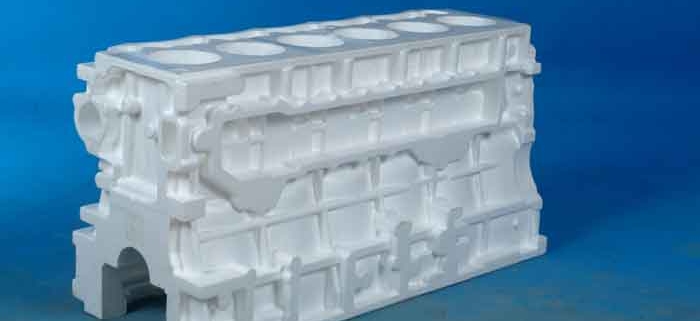Molde de fundición de Metal is one of the molds often used in cast aluminum plants. Se caracteriza por tolerancias de fundición pequeñas, alta eficiencia, y hermosa superficie de fundición de metales. En general, después de la aceptación, con el fin de mantener el estado de rendimiento y la vida útil del molde, the normal production and the quality of the product are ensured, and the production cost is reduced as much as possible, and regular inspection and maintenance are required.
Primero, preparation and inspection before casting
1. Wear protective equipment such as work clothes and safety shoes before you go to work.
2. Confirm the name of the casting and the metal casting mold number of the maintenance metal casting mold.
3. Find the casting sample and the two-mode aluminum casting of the metal casting mold, and inspect the faulty part of the metal casting mold aluminum casting.
4. According to the drawings and materials in the metal mold casting mold file, carry out the next step to confirm the required maintenance items, and develop a detailed maintenance plan.
5. Prepare the tools and accessories to be used, and do each step carefully and responsibly according to the maintenance plan.
Segundo, mantenimiento, molienda, assembly and cleaning of metal casting molds
1. After a period of production and use, a large amount of aluminum scraps and dirt accumulated on each movable part should be removed, and the parting surface, cavity, core, exhaust block and overflow trough should be more serious. During maintenance, the mold should be hung on the cleaning table with a cleaning tool such as a copper brush, a shovel, a rag, a brush, etc. to remove the aluminum slag products (aluminio, aluminum chips), oil stains, mold release residue or any other foreign matter on the mold. The dirt is removed. Be careful not to damage the cavity, core, etc. when cleaning.
2. When disassembling the mold, it should be noted that the combination of each component must have a relative number, which can be combined with the same number, and can not be misplaced. If the assembly is wrong, the phenomenon of flying aluminum will occur in the production, resulting in production failure.
3. Repair metal casting molds according to aluminum castings. Remove the residue in the cavity and save light in the cavity, the sticky aluminum on the core, and the collapse deformation. Repair the welds or changes in the meat to make it form and demould to prevent undercuts. Then check the slider, the guide rail and the position of the movable parts, and carry out effective mold repair and rectification.
4. Repair the mold parts that need to be replaced (such as cavity, ejector, cast pin, bolt, inclined guide post, slider and guide rail). Si es necesario, hand in the quality department inspection, and then replace the damaged parts after the inspection is correct, and assemble according to the installation identification code, beware of the wrong position and direction.
5. Cavity or core damage, can be modified as much as possible. If damage is required, replacement, repair or welding should be carried out as carefully as possible, and repair, replacement, excavation, and repair should be carried out under permitted conditions.
6. When assembling the disassembled mold parts, clean them before cleaning. Then apply rust prevention to the part of the mold (mold frame, cavity, insert, slider core, slider seat, splitter cone, barrel, cast pin, bead, wear block and exhaust block) The oil, as well as the guide pillar guide sleeve series and the moving parts such as the ejector rod and the reset rod, are rust-proof lubricating oil.
Tercera, the maintenance operation after the metal casting mold production operation
1. Regular cleaning and maintenance. In production and use, due to the uneven stress in the casting mold material under high temperature production, stress relief and tempering should be carried out to eliminate the internal stress generated during the production process. Prevent the casting mold from prolonging the production of high temperature conditions, and the material may be affected by deformation and fracture.
2. Tempering to do stress relief treatment. Maintenance is generally based on the size of the aluminum casting and the production batch size. When the mold is used in the production of 8 thousand molds to 10,000 moldes, it is necessary to carry out secondary stress relief and tempering maintenance, and then carry out maintenance stress tempering treatment every 15,000 molds to 20,000 moldes. Its service life.
3. When the mold is cracked or cracked, first check if there is any problem with the size. If there is no problem, first clean the surface residual aluminum residue product or any other foreign matter, and then use the abrasive cloth and oil stone thickness 150 particles to 400 particles for light treatment, and perform effective nitriding, ABP surface treatment or stress relief treatment, Improve product molding and surface quality. When there is a problem, the processing plan should be considered first, and the processing should be carried out after the processing is qualified.
4. Due to the wide variety of aluminum castings, the design structure of metal casting molds is complex and the conditions in production are different. Por lo tanto, three points of stress relief processing, nitriding and ABP surface treatment are set as the maintenance basis.
5. The molds that have not been used for more than two months are cleaned and maintained by the staff. Open the mold and check the internal anti-rust effect. Si hay alguna anormalidad, it must be re-rustproofed. If you do not use it for a long time, you should apply butter to prevent rust and affect post-production. It must be cleaned and inspected before going to the machine.



